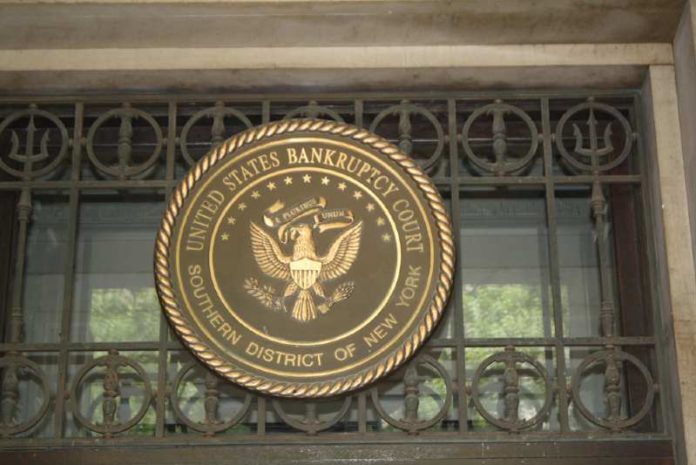It should come as no surprise that many small businesses will be going under as a result of the coronavirus pandemic and the government restrictions that have virtually shut down the U.S. economy.
Many of those small businesses will be thinking about bankruptcy, and are probably not aware that the government has – believe it or not – come to their rescue.
It’s a story that’s been buried the past few months but there’s a new bankruptcy law that offers real relief to small businesses that have been impacted by the virus-related shutdowns.
It’s called the Small Business Reorganization Act. It was passed by Congress in August 2019 and became effective this past February.
To understand the new law and whether it’s right for your business, you need to know some basics.
There are two ways a company can go bankrupt under U.S. law. The company can either go out of business and liquidate its assets under Chapter 7 of the federal Bankruptcy Code, or it can stay in business and “reorganize” its debts under Chapter 11 of the Code.
In a Chapter 11 proceeding, the debtor (that’s you) files a petition with the nearest federal Bankruptcy Court (to find it, go to https://www.uscourts.gov/federal-court-finder/search). Once you file the petition, your creditors can no longer enforce their legal rights against you (any lawsuits or foreclosures come to a screeching halt), and you are given the opportunity to prepare a “plan of reorganization” showing your creditors what you can pay, to whom, and when.
Your creditors will appoint a “committee” to review and negotiate the plan. Once the plan is approved by the creditors’ committee, it is then “confirmed” by the court and any creditors who voted against the plan are “crammed down” (they are forced to accept the plan’s terms).
The process often takes months and can be extremely expensive – legal and accounting fees alone can run in the $10,000 to $20,000 range.
The new law (called “Subchapter V”) creates a streamlined set of rules for “small business debtors” that make Chapter 11 reorganizations much easier, faster and (hopefully) cheaper.
A “small business debtor,” as defined in the law, is one with total debts of $7.5 million or less. One exception: a business engaged “primarily in real estate ownership” cannot take advantage of the new law (sorry, Mr. President).
If you have both business and personal debts, you can file to reorganize both if the personal debts are less than 50% of the total. So, for example, if you have $100,000 in business debts (including a mortgage on your house if it was used as collateral for an SBA or other business loan) and $80,000 in personal credit card debt, you can include them all in the Subchapter V bankruptcy filing and not have to file separately for personal bankruptcy.
When you file under Subchapter V, you must include a list of your creditors (with contact info) and how much they are owed, along with your business’ most recent balance sheet, income statement, cash flow statement, and federal and state income tax returns for the past three years.
Once you file, you have 90 days to prepare and submit to the court a plan of reorganization showing how you plan to pay off your debts. After the plan is filed, you will be required to appear at a meeting of your creditors to discuss the plan and any changes they may ask for. But there is no “creditors’ committee” as there would be in a regular Chapter 11 proceeding, and the creditors don’t have much to say. If the judge believes the plan is “fair and equitable” and doesn’t discriminate unfairly against any particular debtor, he or she must approve the plan even if creditors object
A court must find a plan to be “fair and equitable” if it provides that all of your disposable business income (free cash flow) will be applied to pay creditors over a period of three to five years. You will be allowed a small salary to cover your basic business and living expenses, but that’s about it – everything else goes to the creditors.
For help in preparing the plan of reorganization, contact your local SCORE office (www.score.org) – their counselors are experienced in preparing business plans of all types and will provide assistance free of charge.
You will need a lawyer to file a Subchapter V bankruptcy. In a regular Chapter 11 proceeding, your bankruptcy lawyer’s fees must be paid before the petition is filed, which is why bankruptcy attorneys historically ask for a large upfront payment (called a “retainer”). If an attorney helps you with a Subchapter V reorganization, his or her fees are treated as a “priority claim” in the proceeding, meaning his or her fees can be paid out over time as part of the plan.
For more information about the new law, see my one-hour YouTube video on “Bankruptcy Basics” (go to www.youtube.com and search for “Cliff Ennico bankruptcy”).
Cliff Ennico (crennico@gmail.com) is a syndicated columnist, author and former host of the PBS television series “Money Hunt.” This column is no substitute for legal, tax or financial advice, which can be furnished only by a qualified professional licensed in your state.
COPYRIGHT 2020 CLIFFORD R. ENNICO.
Bankruptcy stock photo by JRRieger/Shutterstock







